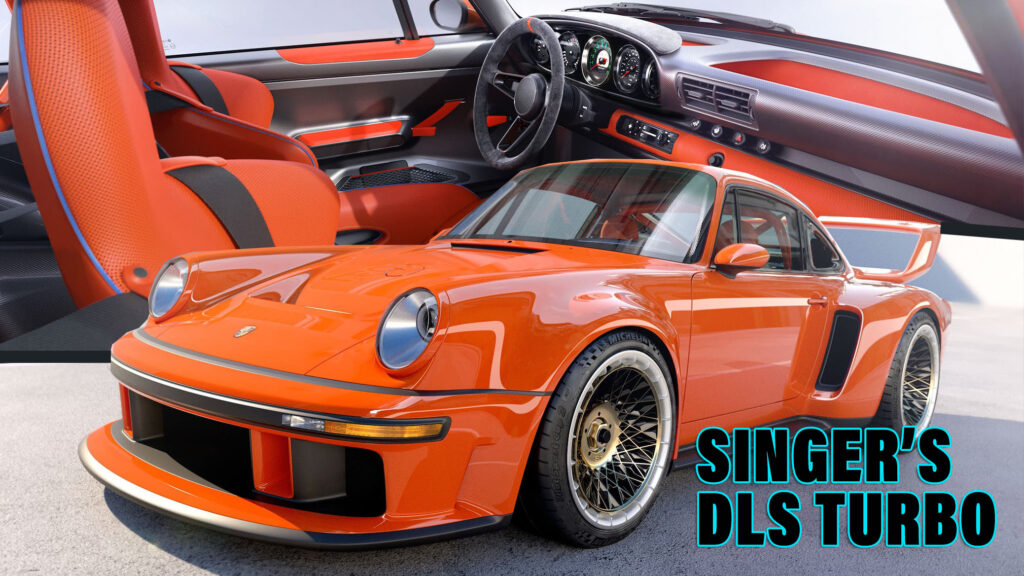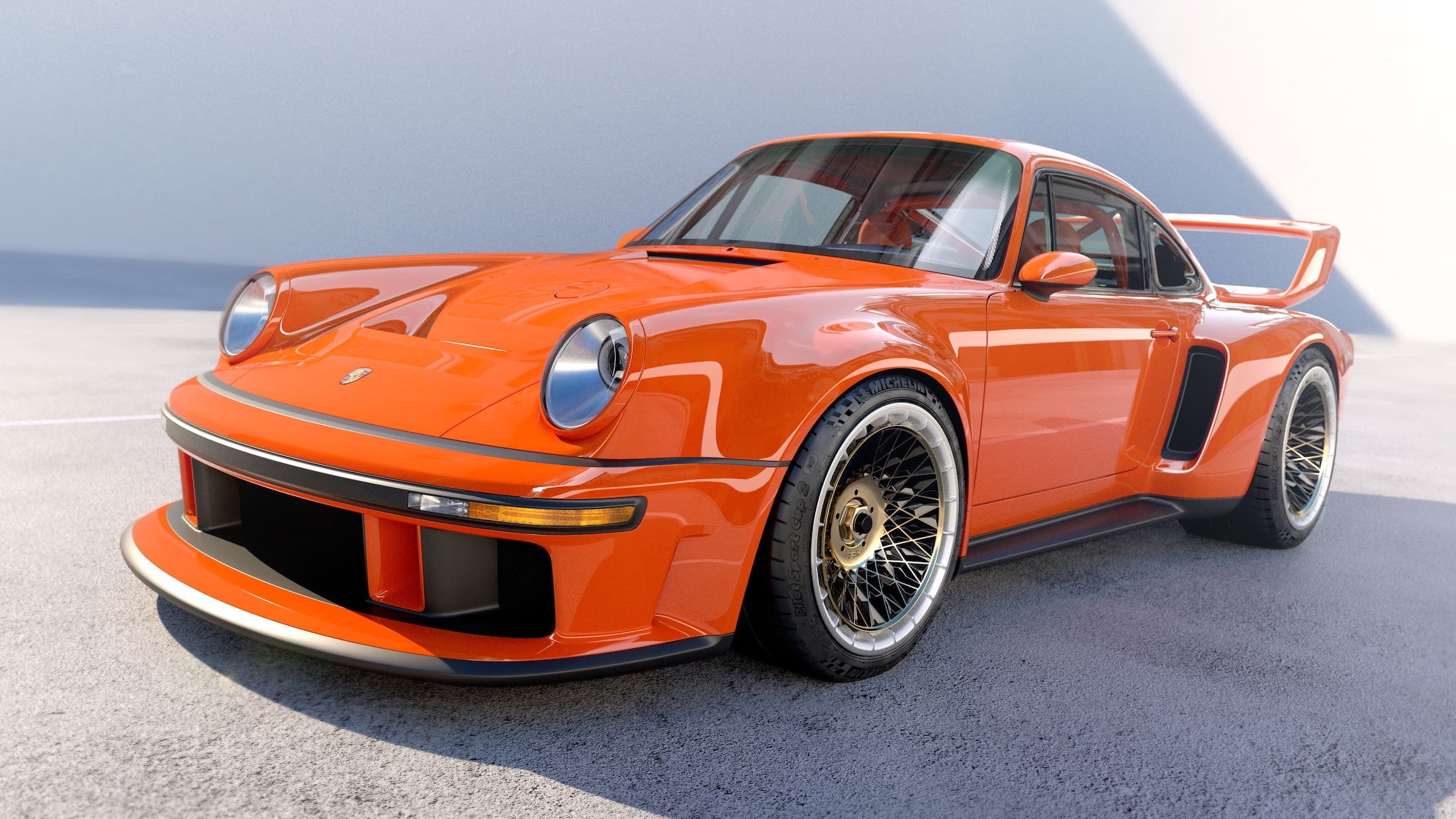The world isn’t short of firms making old 911s look like even older 911s and drive like newer ones, but Singer remains the poster child for the whole movement. Because just when it looks like the ‘other’ companies are catching up, Singer makes another giant leap forward (or is it backwards?) and leaves everybody dumbstruck.
On that note, meet the latest Singer project, a fusion of what Rob Dickinson and his crew have learned from the Dynamic and Lightweight Study and Turbo Study projects, mixed in with some huge love for the classic 934/5 racers that dominated U.S. competition during the late 1970s. It’s called the DLS-Turbo and it’s just gone right to the top of the Porsche list in our dream garage.
More: 510 HP Singer Turbo Study Makes World Debut At 2022 Goodwood Festival of Speed
Like all of Singer’s cars, it’s loosely based around a 964-generation 911 from the early 1990s, though you’d be hard pressed to tell, because no road or even race 964 ever looked this wild, or wide. There are two specifications available, the Blood Orange car in the pictures showcasing the Track configuration, while the fractionally less mad Moet Blanc car is in Road spec.
Both versions feature huge carbon fenders, the extra-boxy rears featuring massive cooling intakes, plus rear side windows fitted with air intakes that feed the hungry 3.8-liter turbocharged flat six in the rear. But while the road version comes with a retro ducktail spoiler the Track model gets an enormous two-deck wing, plus an even bigger front splitter. Can’t decide which version you like better? Singer will sell you a car with both wings so you can swap between the two depending on your mood (and ability to wrench).
The jutting front lip and the way the rear track seems to extend a good foot (300 mm) from the body line means both cars look outrageous from the the front-three-quarter angle, but they’re craziest when viewed from the behind, and not only because each appears to be giving birth to a G-series 1980s 911. The interiors are equally striking, and though they differ in terms of materials, colors and equipment, both feature the same heavily bolstered sports seats and dials that combine styling elements from 1960s and 1980s Porsche instruments.
Over 700 Horses
But the heart of the DLS-Turbo is of course, the turbo bit. You get the same motor whichever body you opt for, and it’s a 3.8-liter twin-turbo flat six that makes over 700 hp (710 PS). That compares with 500 hp (507 PS) for the naturally aspirated 4.0 DLS and 510 hp (517 PS) for the motor in the 911 Turbo Study. It features water-cooled heads, like a 959, an electrically driven fan, and despite the presence of those turbos still spins to over 9,000 rpm.
Power goes to the rear axle only via a six-speed manual transmission and the two styles of 19-in front and 20-in rear wheels have center-lock mounts. Tires can be Michelin cup 2s or Cup2Rs and the rears, in case you were trying to mentally gauge the width, measure 345 mm across. That makes them as wide as the boots on late 1970s Countach.
Singer is reported to be building 99 DLS Turbos, and though it hasn’t revealed a price you can expect the bill to comfortably exceed the $2 million asked for the original DLS. What do you think of the DLS-Turbo and what should Singer do next?































